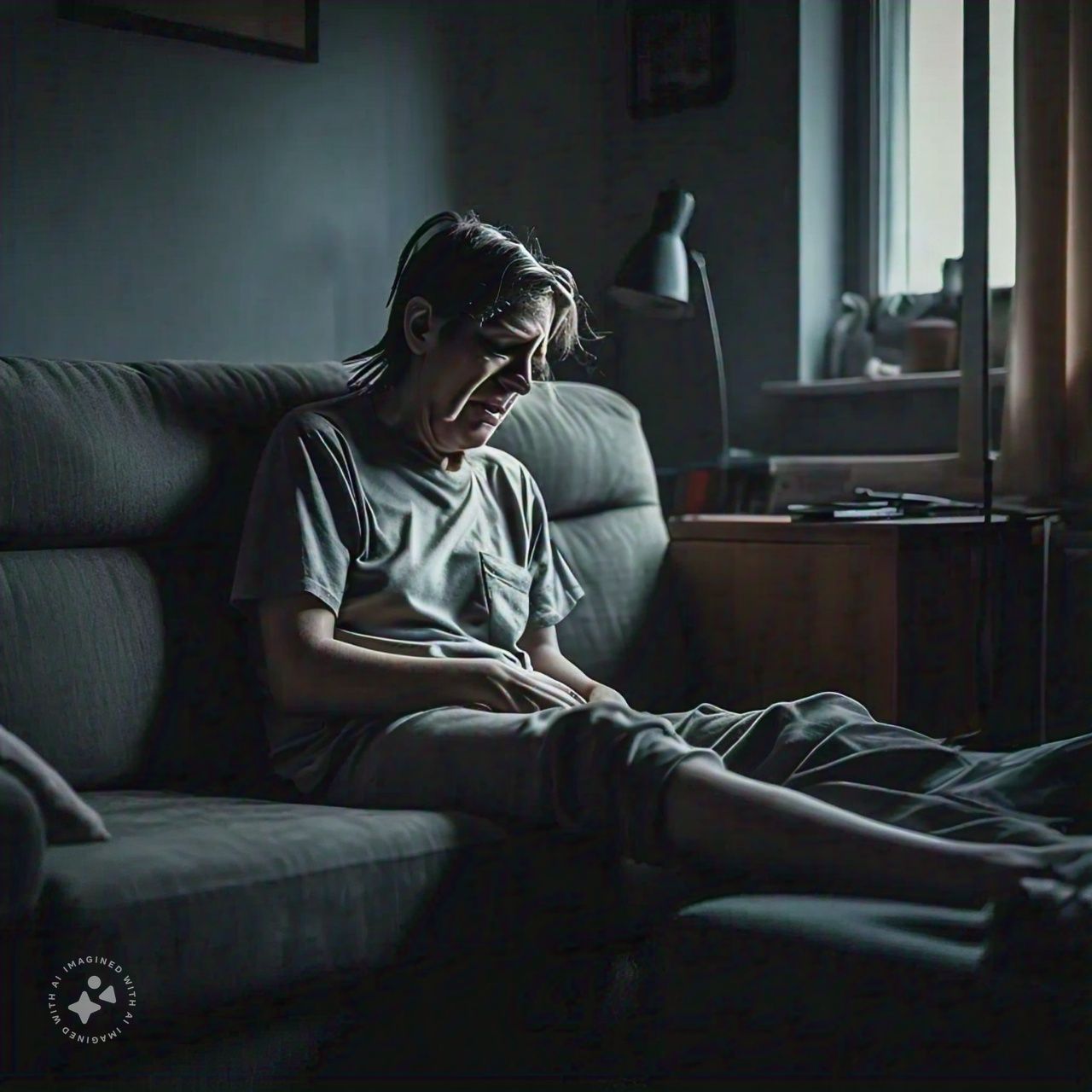EMOTIONS IN MOTION: THE COMPLEX DANCE OF CATAPLEXY.
EMOTIONS IN MOTION: THE COMPLEX DANCE OF CATAPLEXY.
Dear Readership, Did you know that Laughter, feelings of Excitement (such as during love making), and sudden surprises can lead to Paralysis?
Just like I used to say, Life would want to whine you.. but, do not panic!
It happened that few days ago I was on Twitter (now X) and whilst I was scrolling here and there, i saw a tweet from Arojinle where he briefly spoke about Cataplexy. I decided to research further and now I have decided to share my findings with you.. My Dear Readership.
What's in this for you?
I would want Us to demystify Cataplexy together and to learn whilst doing that, so that when you see anyone with this condition, you would know what it is and how to be of help.
Now.. let's get the ball rolling.
CATAPLEXY is a very rare condition, a complex neurological condition that is often characterized by brief episodes of muscle weakness or paralysis typically triggered by strong emotions such as laughter, excitement and even surprises. Muscles typically sway to the rhythm of feelings, like a delicate ballet where emotions reveal. Imagine the body hitting the ground when laughter echoes.. a joyful sound for that matter. In cataplexy's mysterious embrace, emotions and motion entwine in a fragile space, it's a dance of contradictions, the confluence for strength and weakness.
The paralytic episodes associated with catalepsy can range from mild to severe and can affect any muscle group, including facial muscles, leg muscles, arm muscles or even that of the whole body.
It is important to note that emotions play a viral role in Cataplexy. In fact, emotions trigger the episodes. In some people, episodes have been shown to have occurred while they were laughing very hard. In others, it's a feeling of excitement, when they are in the euphoria of the moment and then in others, when they get very very surprised maybe by loved one. It has also be recorded that heightened stress can trigger the episodes associated with Cataplexy.
Furthermore, During a cataplexy episode, the physical symptoms can vary widely. Some common symptoms include:
1. Muscle weakness: A feeling of weakness or heaviness in the affected muscles.
2. Paralysis: Temporary paralysis of the affected muscles.
3. Drooping eyelids: The eyelids may droop or become heavy during an episode.
4. Slurred speech: Speech may become slurred or difficult to understand.
I think at this juncture, it would be nice to get to know the mechanism of action of this disorder - I mean, how it happens.
It is important to note that the mechanism of action is not fully understood but hypothesis have been made.
This disorder occurs almost exclusively in patients with depletion of hypothalamic orexin neurons. Orexin neurons are a type of neurons located in the hypothalamus and projected into different portions of the brain regions. They secrete substances known as Orexin A and Orexin B and they function to control motor functions (such as muscle tone and movement ) amongst so many roles.
One pathogenetic mechanism that has been hypothesized for cataplexy is the activation, during wakefulness, of brainstem circuitry that normally induces muscle tone suppression in rapid eye movement sleep. Muscle weakness during cataplexy is caused by decreased excitation of noradrenergic neurons and increased inhibition of skeletal motor neurons by a substance known as Gabba- aminobutyric acid-releasing neurons.
The amygdala and medial prefrontal cortex contain neural pathways through which positive emotions probably trigger cataplectic attacks.
In recent times, major advances in understanding disease mechanisms in cataplexy has been made, however, therapeutic management is largely symptomatic, with antidepressants and hydroxybutyrate being the most effective treatments.
You will agree with me that living with Cataplexy would be a challenge.. a very big challenge at that but how can you help people living with this condition?
Foremost, it is not a communicable disease, help them as much as possible especially during these episodes and afterwards. Assure them that all will be well and always make them know that they are loved.
You can also help them with these coping strategies and techniques that can help manage the episodes -
1. Emotional awareness: Recognizing and understanding emotional triggers can help individuals prepare for potential episodes. Family and Friends of people living with this condition should try as much as possible to prevent surprises.
2. Self-regulation: Practicing self-regulation techniques such as deep breathing and being very calm can help manage stress and emotions.
3. Support systems: Building a support network of family, friends, and healthcare professionals can provide emotional support and help individuals cope with cataplexy.
Well, just like TheMBN would say, till we get to the promised land, I shall be waiting for when you will pass me a glass of water and thank God for the gift of grace for the race.
NEXT UP - 10 MOST INTELLIGENT ANIMAL SPECIES.
Dear Readership, Did you know that Laughter, feelings of Excitement (such as during love making), and sudden surprises can lead to Paralysis?
Just like I used to say, Life would want to whine you.. but, do not panic!
It happened that few days ago I was on Twitter (now X) and whilst I was scrolling here and there, i saw a tweet from Arojinle where he briefly spoke about Cataplexy. I decided to research further and now I have decided to share my findings with you.. My Dear Readership.
What's in this for you?
I would want Us to demystify Cataplexy together and to learn whilst doing that, so that when you see anyone with this condition, you would know what it is and how to be of help.
Now.. let's get the ball rolling.
CATAPLEXY is a very rare condition, a complex neurological condition that is often characterized by brief episodes of muscle weakness or paralysis typically triggered by strong emotions such as laughter, excitement and even surprises. Muscles typically sway to the rhythm of feelings, like a delicate ballet where emotions reveal. Imagine the body hitting the ground when laughter echoes.. a joyful sound for that matter. In cataplexy's mysterious embrace, emotions and motion entwine in a fragile space, it's a dance of contradictions, the confluence for strength and weakness.
The paralytic episodes associated with catalepsy can range from mild to severe and can affect any muscle group, including facial muscles, leg muscles, arm muscles or even that of the whole body.
It is important to note that emotions play a viral role in Cataplexy. In fact, emotions trigger the episodes. In some people, episodes have been shown to have occurred while they were laughing very hard. In others, it's a feeling of excitement, when they are in the euphoria of the moment and then in others, when they get very very surprised maybe by loved one. It has also be recorded that heightened stress can trigger the episodes associated with Cataplexy.
Furthermore, During a cataplexy episode, the physical symptoms can vary widely. Some common symptoms include:
1. Muscle weakness: A feeling of weakness or heaviness in the affected muscles.
2. Paralysis: Temporary paralysis of the affected muscles.
3. Drooping eyelids: The eyelids may droop or become heavy during an episode.
4. Slurred speech: Speech may become slurred or difficult to understand.
I think at this juncture, it would be nice to get to know the mechanism of action of this disorder - I mean, how it happens.
It is important to note that the mechanism of action is not fully understood but hypothesis have been made.
This disorder occurs almost exclusively in patients with depletion of hypothalamic orexin neurons. Orexin neurons are a type of neurons located in the hypothalamus and projected into different portions of the brain regions. They secrete substances known as Orexin A and Orexin B and they function to control motor functions (such as muscle tone and movement ) amongst so many roles.
One pathogenetic mechanism that has been hypothesized for cataplexy is the activation, during wakefulness, of brainstem circuitry that normally induces muscle tone suppression in rapid eye movement sleep. Muscle weakness during cataplexy is caused by decreased excitation of noradrenergic neurons and increased inhibition of skeletal motor neurons by a substance known as Gabba- aminobutyric acid-releasing neurons.
The amygdala and medial prefrontal cortex contain neural pathways through which positive emotions probably trigger cataplectic attacks.
In recent times, major advances in understanding disease mechanisms in cataplexy has been made, however, therapeutic management is largely symptomatic, with antidepressants and hydroxybutyrate being the most effective treatments.
You will agree with me that living with Cataplexy would be a challenge.. a very big challenge at that but how can you help people living with this condition?
Foremost, it is not a communicable disease, help them as much as possible especially during these episodes and afterwards. Assure them that all will be well and always make them know that they are loved.
You can also help them with these coping strategies and techniques that can help manage the episodes -
1. Emotional awareness: Recognizing and understanding emotional triggers can help individuals prepare for potential episodes. Family and Friends of people living with this condition should try as much as possible to prevent surprises.
2. Self-regulation: Practicing self-regulation techniques such as deep breathing and being very calm can help manage stress and emotions.
3. Support systems: Building a support network of family, friends, and healthcare professionals can provide emotional support and help individuals cope with cataplexy.
Well, just like TheMBN would say, till we get to the promised land, I shall be waiting for when you will pass me a glass of water and thank God for the gift of grace for the race.
NEXT UP - 10 MOST INTELLIGENT ANIMAL SPECIES.


